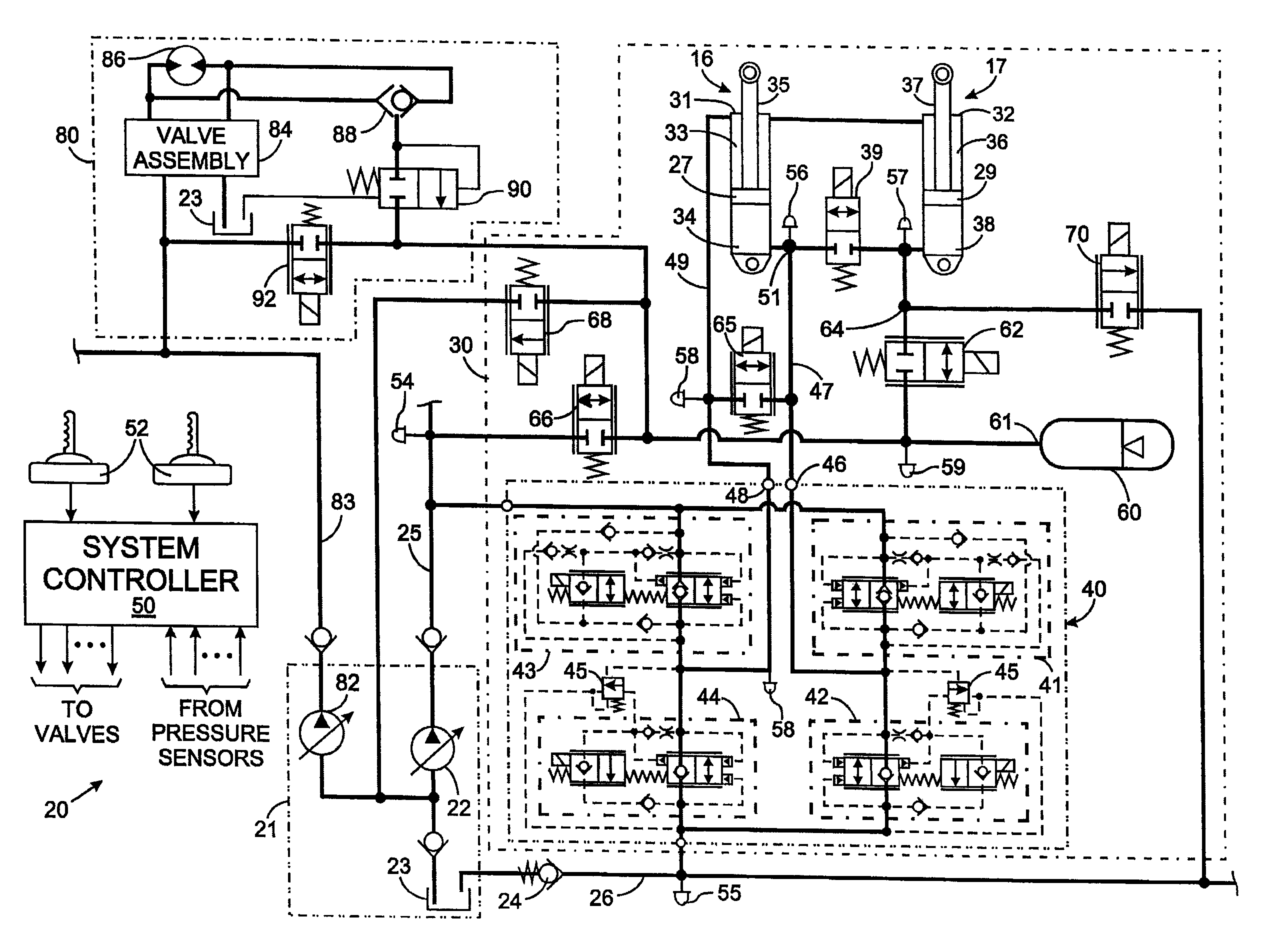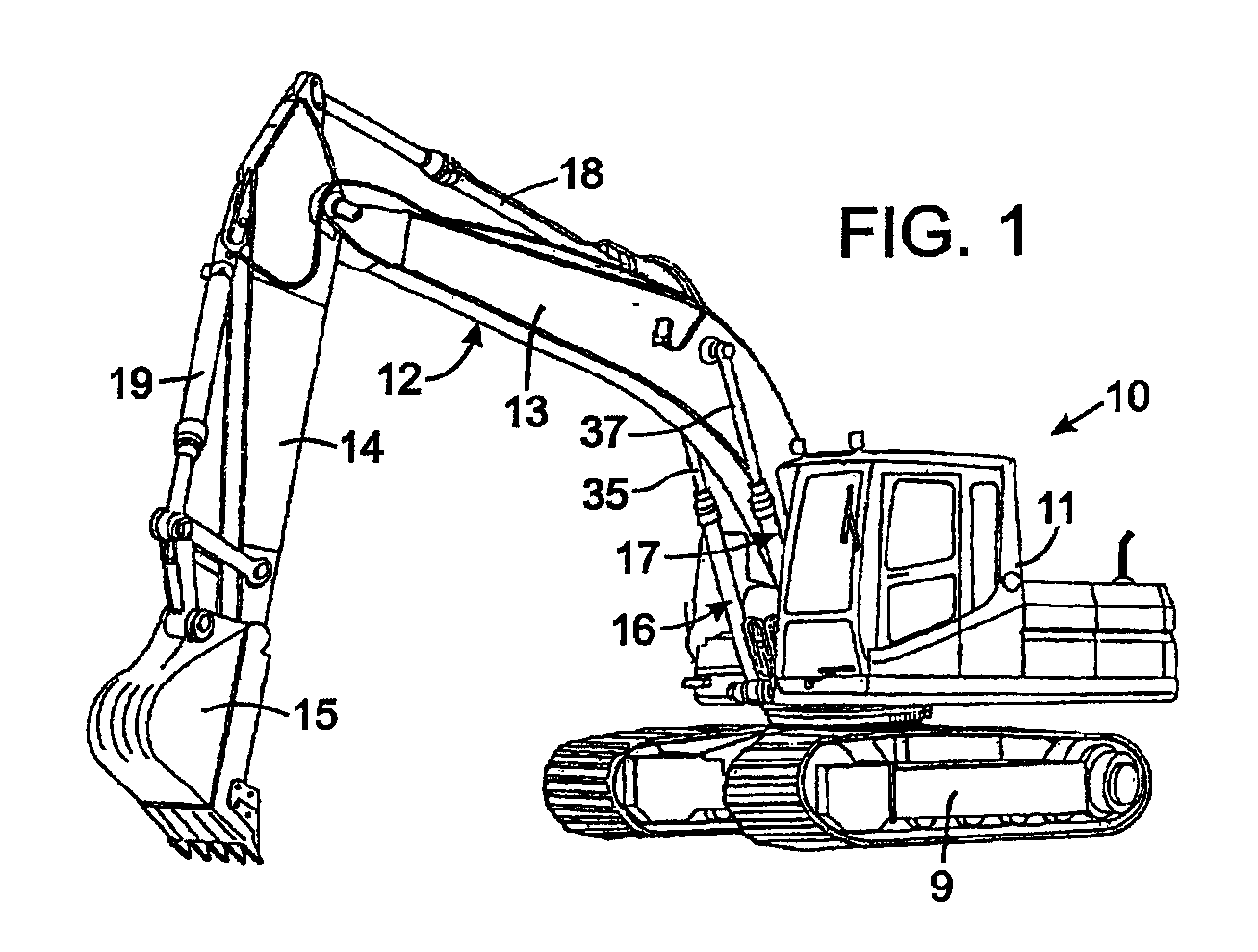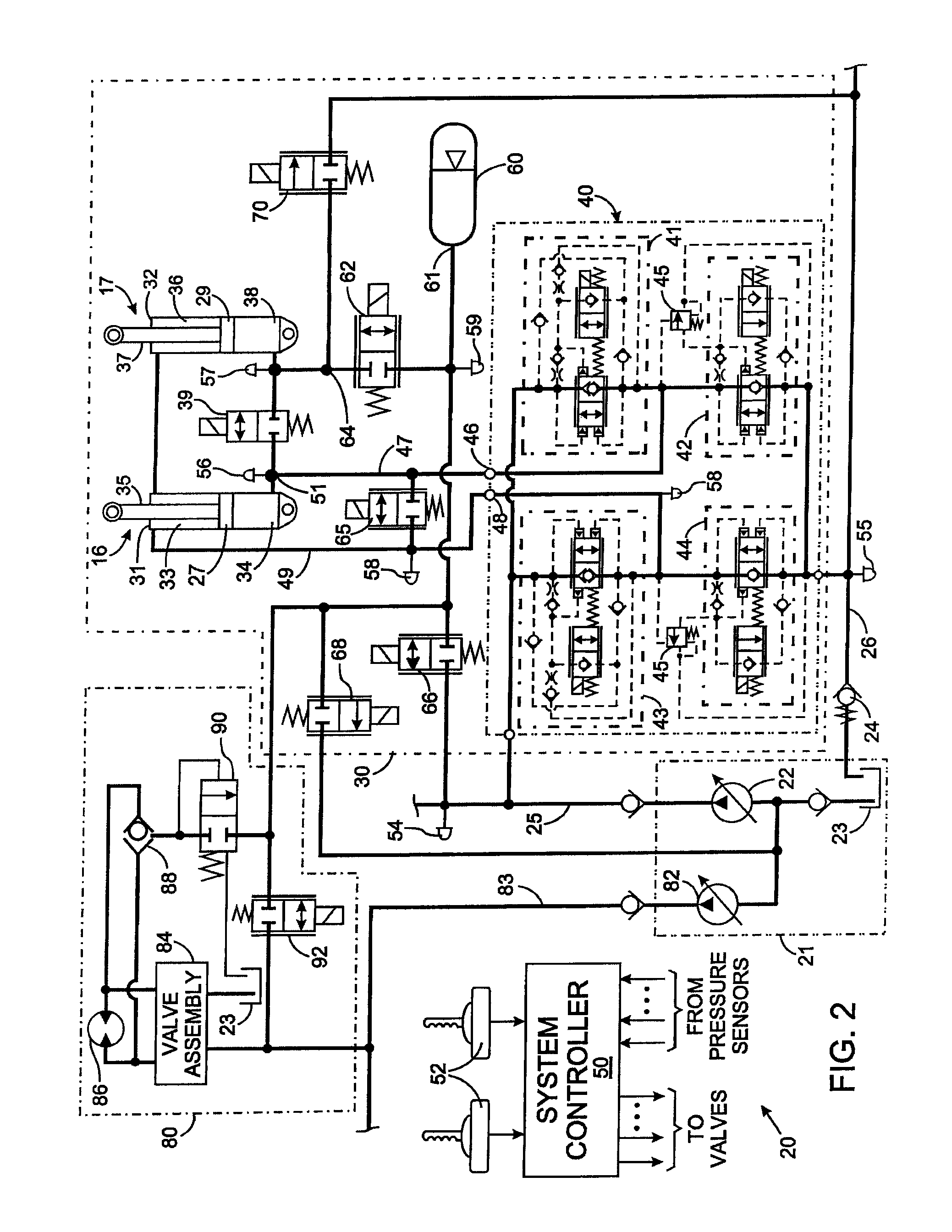Energy recovery and reuse techniques for a hydraulic system
a technology of energy recovery and hydraulic system, applied in the direction of fluid couplings, servomotors, couplings, etc., can solve the problems of inability to use recovered fluid, inability to store fluid, and difficulty in achieving effective operation
- Summary
- Abstract
- Description
- Claims
- Application Information
AI Technical Summary
Benefits of technology
Problems solved by technology
Method used
Image
Examples
example 1
[0041]Assume that the first pump 22 supplies fluid to other hydraulic functions on the machine and is running at 300 bar pressure to satisfy the highest demand of those functions. In addition, assume that still other hydraulic functions are connected to the second pump 82, which is running at 200 bar pressure to satisfy its highest fluid demand. Further assume that 250 bar pressure is required to lift the load on the boom 13.
[0042]With a conventional system, the first pump 22 would stay at 300 bar and the extra 50 bar would be “burned” as pressure compensation losses. In that conventional system, the pressure of the second pump 82 would rise to 250 bar and its other hydraulic functions would produce pressure compensation losses, due to the pressure being greater than required at those functions.
[0043]With the system shown in FIG. 3, the first pump 22 continues operating at 300 bar and the second pump 82 continues to operate at 200 bar, thus a combined average of 250 bar. Each of tho...
example 2
[0044]Assume that there is another hydraulic function connected to the first pump 22 that already has consumed all that pump's output flow. If raising the boom 13 is commanded, then the second pump 82 can furnish all the power to the boom through supply control valve 98 and the second cylinder assembly 17, while fluid for the head chamber 34 of first cylinder 31 is drawn from the return conduit 26 through the anti-cavitation check valve in the second EHP control valve 42.
[0045]The functionality of examples 1 and 2 can be provided by a third hydraulic system 100 that uses solenoid operated spool valves, such as depicted in FIG. 4. Hydraulic system 100 includes a boom function 102 in which the same components as in the previously described systems have been identified with identical reference numerals. The head chambers 34 and 38 of the first and second boom cylinders 31 and 32 are coupled hydraulically by a bidirectional, electrohydraulic cylinder separation control valve 39. An elec...
PUM
 Login to View More
Login to View More Abstract
Description
Claims
Application Information
 Login to View More
Login to View More - R&D
- Intellectual Property
- Life Sciences
- Materials
- Tech Scout
- Unparalleled Data Quality
- Higher Quality Content
- 60% Fewer Hallucinations
Browse by: Latest US Patents, China's latest patents, Technical Efficacy Thesaurus, Application Domain, Technology Topic, Popular Technical Reports.
© 2025 PatSnap. All rights reserved.Legal|Privacy policy|Modern Slavery Act Transparency Statement|Sitemap|About US| Contact US: help@patsnap.com



